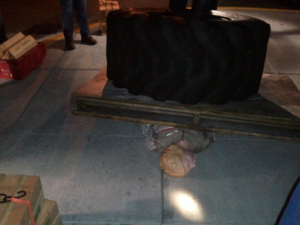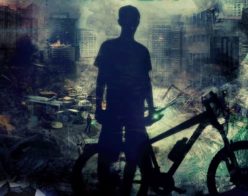Light search & rescue.
The “rules” for light search and rescue, for example, trying to help people who may be trapped in a building after an earthquake (or anything else that could knock a building down) are as follows:
1) Be safe!
2) Do the greatest good for the most people, vs. dedicating all of your resources to solving one problem of many
Of course, before you run willy-nilly into a building to rescue someone, you need to determine whether you will die if you do that :-|. You must evaluate the scene and see how dangerous it is. One of the first things to do is to look at the damage. If it’s light or medium damange, you may consider entering, searching, and rescuing as needed. If the damage is heavy, don’t go it.

“Don’t go in and rescue the crying person? That’s terrible!” Yes it is. But it’s not as terrible as you going inside and possibly:
1) Causing the building to collapse further, making the situation worse for the trapped person or
2) Getting trapped yourself, making the situation worse for everyone else you could otherwise be helping, as well as for yourself!
In addition to learning more about damage and search techniques, we learned a bit about cribbing. What is cribbing? If you look up the noun, it’s defined as a temporary wooden structure used to support heavy objects during construction, search and rescue, etc.
We also used it as a verb: to build up those wooden supports while levering something heavy off of a victim. This comes in handy when you have a piece of wall or bookshelf or whatever pinning a victim down, and some other pieces of wood to use as a lever and cribbing to free him or her, in an emergency. It’s not too difficult to imagine a situation like this after an earthquake, when the fire department is too overloaded to help, and it’s a life or death situation.

As you can see in the picture here, we have a victim trapped under a pallet with a huge tire on top of it. The piles of wood are pieces of 2×4, but for purposes of emergency cribbing, they of course don’t have to be as pretty as these. What did we do next? After our FD captain explained the basics, we used a lever and pieces of wood to slowly and safely (it didn’t fall back onto the victim or any of the rescuers!) raise the pallet off of the “victim”, so we could pull her out and do first aid. To see what the end result looks like, take a CERT course! 🙂
Do I expect I’ll be doing any cribbing soon? No. Is it more likely that I’ll need to use a fire extinguisher effectively? Yes. But it’s also a good tool to have in your toolbox, and I know a lot more now about it than I did before.
As with everything we do in our CERT training, this will not make me an expert Search-and-Rescue operator, or a carpenter, physician, or engineer. But it does give me some good ideas for how I can help in a pinch.
